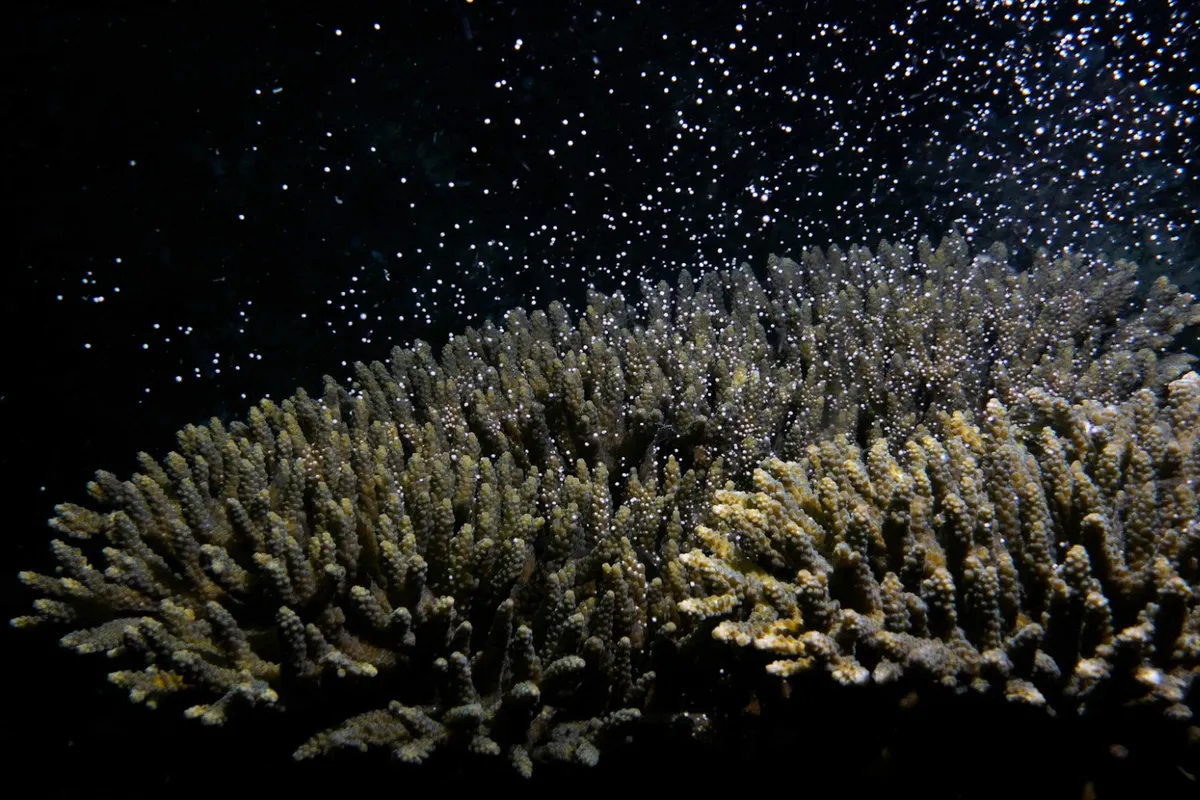A mass coral reef spawning event has been observed in Cambodian waters for the very first time. The incredible phenomenon, captured in a series of mesmerising videos, demonstrates that coral in the area remains healthy despite challenging conditions, say marine scientists.
The spawning event - which researchers say could help inform future conservation efforts – was observed and filmed by Fauna & Flora’s Cambodia team, alongside partners including Song Saa Foundation, Bubbles Up! Dive Centre and Cambodia’s Fisheries Administration and Ministry of Environment, with advice from Dr Rahul Mehrotra and Aow Thai Marine Ecology Center.
- 100 new ocean species discovered off the coast of New Zealand
- Scientists have developed an amazing new technique to restore coral reefs
- Giant prehistoric sea lizard with dagger-like teeth discovered in Morocco
- Incredibly rare giant turtle with a face like a frog found in India's tropics
Coral spawning, or coral reproduction, is one of nature's great spectacles. It usually occurs once a year and marks the moment when whole colonies of coral reefs release their sperm and eggs simultaneously, with some events lasting over an hour.
The nature of Cambodian coral reefs means they experience high sedimentation, as well as significant variations in temperature between the wet and dry seasons. The mass spawning event proves that reefs around the Cambodian coastline have not been severely affected by climate change, which can prevent reproduction, say scientists involved in the study. This therefore makes the reefs an important habitat for thermally tolerant corals that can seed other reefs elsewhere in the Gulf of Thailand.
“What a spectacular event to witness along our coastline," says Matt Glue, Fauna & Flora’s Marine Technical Specialist in Cambodia.
"It was like an explosion of life as the reef released thousands of eggs – spreading as far as the eye could see."
“Coral reefs provide a crucial habitat for marine life, as well as vital ecosystem services through tourism and fisheries that coastal communities in Cambodia rely on. It is therefore enormously reassuring to see the coral here remains healthy, and this sighting will help to improve our knowledge of coral reproduction in the Gulf of Thailand.”

Chantha Chroeng, a Marine Species & Ecosystems Officer at Fauna & Flora, says: “It is difficult to explain, but the mass spawning is like snow, except instead of falling it moves up slowly, slowly. It is a wonderful spectacle.”
Sorn Srenh, Deputy Chief of Koh Sdach Commune, adds: “Coral spawning is truly captivating, and it has left a lasting impact on my soul. When corals spawn, it is a sign that they are flourishing and that the environmental conditions are conducive to their survival and growth.”
Fauna & Flora is working with the Cambodian Fisheries Administration and Ministry of Environment and local NGOs to protect marine and coastal ecosystems in the area. The work includes biodiversity research, marine protected area development and the restoration of mangrove forests.
Fauna & Flora and its partners are also engaging with local communities along the Cambodian coastline to raise awareness of the value of marine resources and develop sustainable conservation methods and livelihood activities.
Main image credit: Sorn Srenh / Koh Sdach Commune
